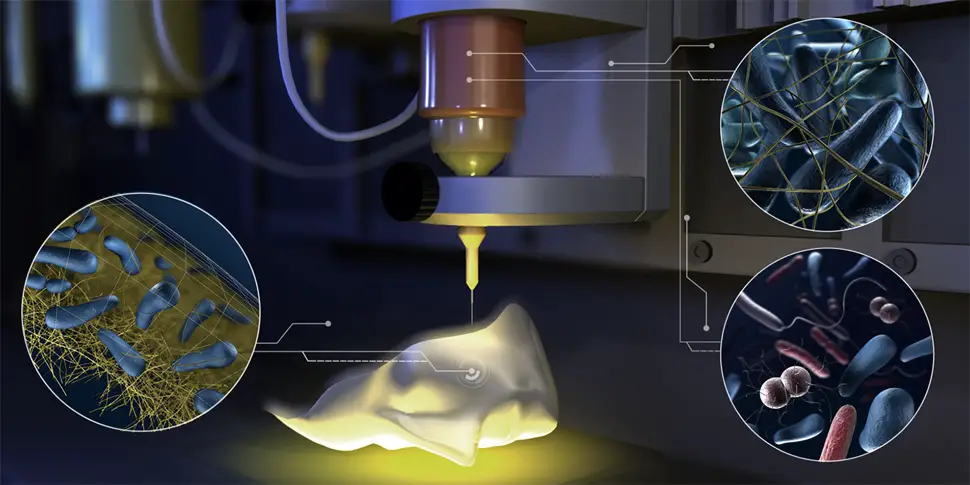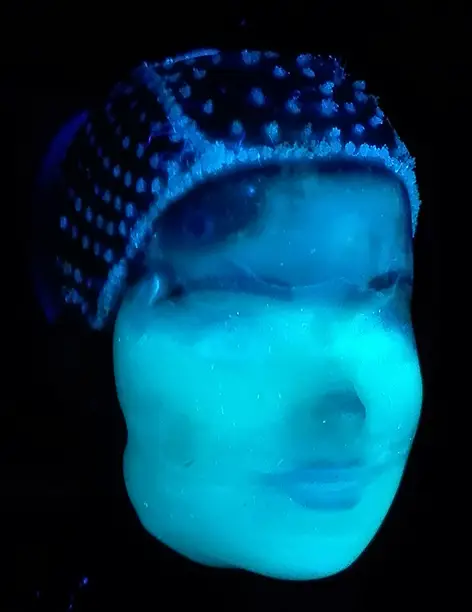
4th December 2017 3D printer uses living bacteria for ink Researchers at ETH Zurich in Switzerland have developed a 3D printer that uses living matter for ink, which offers unique properties not found in "dead matter" such as plastics or metals.
There will soon be nothing that cannot be produced with 3D printing. However, the materials used for this process are still "dead matter", such as plastics or metals. Now, a group of researchers from ETH Zurich, led by Professor André Studart, Head of the Laboratory for Complex Materials, has introduced a new 3D printing platform that works using living matter. They developed a bacteria-containing ink that makes it possible to print mini "biochemical factories" with certain special properties, depending on which species of bacteria the scientists put in the ink. Professor Studart's group used the bacteria Pseudomonas putida and Acetobacter xylinum in their work. The former can break down phenol, a toxic chemical produced on a grand scale in the chemical industry; the latter secretes high-purity nanocellulose that can relieve pain, retain moisture and is stable – opening up potential applications in the treatment of burns.
The researchers' new printing platform offers numerous potential combinations. In a single pass, it can use up to four inks containing different species of bacteria at different concentrations, in order to produce objects exhibiting several properties. The ink is composed of a biocompatible hydrogel that provides structure. The hydrogel itself is composed of hyaluronic acid, long-chain sugar molecules and pyrogenic silica. The culture medium for the bacteria is mixed into the ink so the bacteria have all the prerequisites for life. Using this hydrogel as a basis, the researchers can add bacteria with the desired "range of properties" and then print any three-dimensional structure they like. The researchers believe their new ink is completely safe. The bacteria they use are harmless and beneficial. In addition to medical and biotechnology applications, they envisage many other potential uses. For example, objects of this kind can be used to study degradation processes or biofilm formation. One practical application might be a bacteria-containing 3D-printed sensor that could detect toxins in drinking water. Another idea would be to create bacteria-containing filters for use in disastrous oil spills. First, it will be necessary to overcome the challenges of the slow printing time and difficult scalability. Acetobacter currently takes several days to produce cellulose for biomedical applications. However, the scientists are convinced that they can further optimise and accelerate the processes. Their work is published in the journal Science Advances.
Comments »
If you enjoyed this article, please consider sharing it:
|








